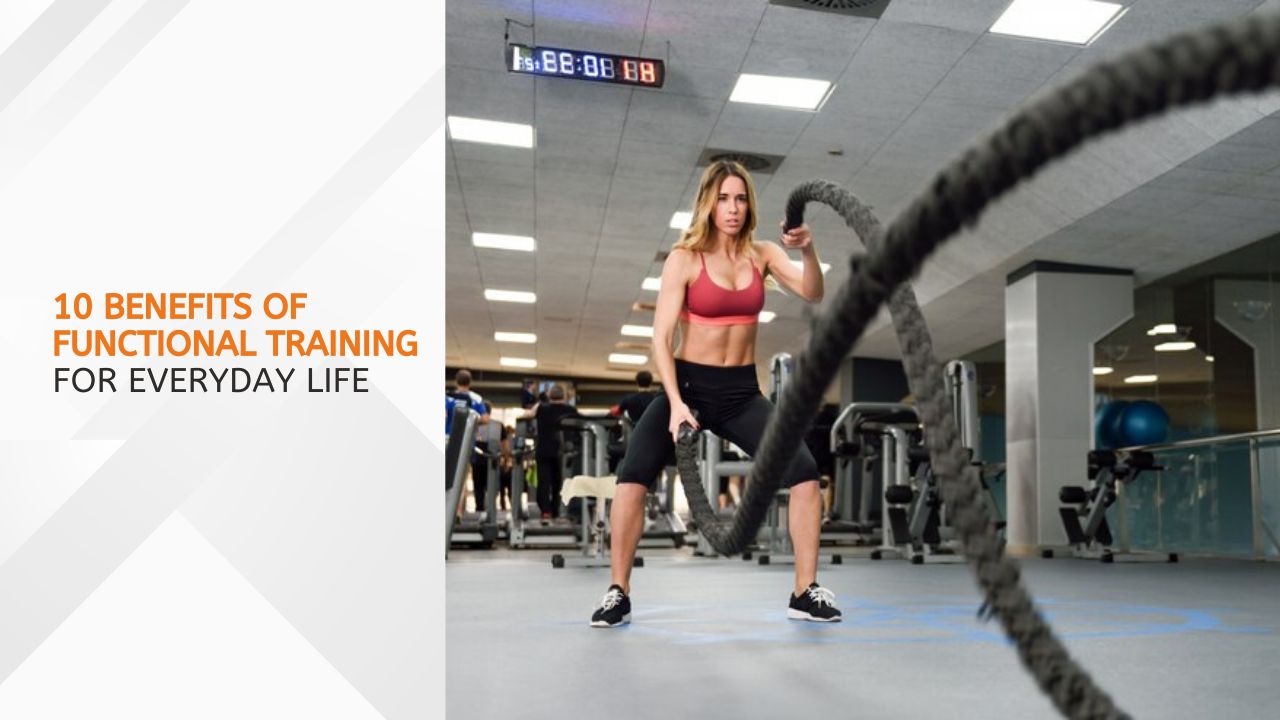Introduction:
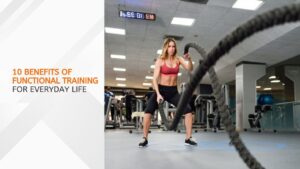
Therefore, functional fitness has become the new trendy gym program in the generation that is characterized by dynamic fads. But first, let me explain what exactly is functional fitness, and why it is so crucial? This detailed article will delve into what functional fitness is, why people should practice it, and how to do it.
What is Functional Fitness?
This is a set of exercises that copy various movements in day-to-day life hence helping to build improved strength, coordination and balance. The main objective here is mainly aimed at strengthening your muscles therefore boosting your chances of going about your daily tasks without necessarily having to suffer from any sort of strain or even pain. Contrary to the conventional style of working out that basically targets individual muscles, functional fitness involves the use of composite movements that relate to more than one joint.
That said, the purpose of functional fitness is to evaluate an individual’s fitness level in order to improve his or her ability to motor through an everyday task without getting tired too quickly.
Multidimensional Movement: Functional fitness involves exercises that mimic fundamental body movements such as squatting and standing, lifting, pushing and pulling.
Core Stability: Coordination plays a very important role in holding the correct posture during an exercise and other routine activities.
Balance and Coordination: All functional exercises enhance your ability to balance and coordinate that are necessary for avoiding falls and further complications.
Flexibility: Including flexibility training is necessary for the purpose of preserving the integrity of mobility, which is crucial for mobility.
Read More Article Like This on SmartandFit.online
Advantages of fuctional fitness

1. Improved Daily Functionality Functional fitness therefore prepares your body especially muscles to perform all the regular activities in an efficient way. In terms of functionality lifting groceries, playing with your kids or climbing stairs functional fitness gets you ready for these.
2. This is because muscles build strength and endurance depending with the frequency of the specific exercises done for the specific time duration chosen. One of the interesting aspects in functional fitness training includes resistance training that can have a huge impact on strength and endurance. This leads to enhanced capacity in carrying out day-to-day economic activities and sporting prowess.
3. Injury Prevention Functional fitness, thus, is considered useful as it can be used to develop and enhance the muscle and joint groups that are used in different movements to minimize injury. Stronger muscle tone, limb coordination, and joint mobility are essential to avoid accidents and muscular injuries.
4. Better Posture The functional exercises most commonly used involve the use of the abdominal as well as the back muscles to foster better posture among the elderly. It proves most helpful if a person is confined to a desk most of the day or with tasks that involve repetitive movements in a workstation.
5. Increased Energy Levels Participating in functional fitness can increase the overall energy levels. This allows more energy in workouts while reducing fatigue during and after the exercises so you can do more activities.
How to get started in functional fitness
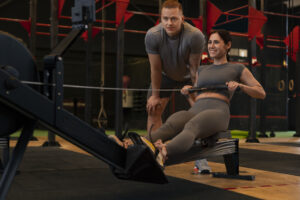
Assess Your Fitness Level
It is essential to understand the current fitness level before proceeding to practice functional fitness. Self-assess for priorities before beginning and if unsure of the appropriateness of an exercise, seek advice from a fitness specialist. This will help you design a program that may suit your needs as per your requirements.
Read More Article Like This on SmartandFit.online
Choose the Right Exercises
Here are some fundamental functional exercises you can incorporate into your routine:
Squats: A clone of sitting down and standing up exercises which will help in improving your leg and stomach muscles.
Lunges: Helps in balancing and coordination while it tones the legs and the glutes.
Deadlifts: Strengthens several muscles at once, helping you learn how to pick up heavy items properly.
Push-Ups: It assists in strengthening the upper part of the body muscles, the muscles round the abdomen hence helping in attaining good posture.
Planks: Improves body control and muscular strength to help support your spine during movement.
Kettlebell Swings: Help enhance power, strength and endurance in so doing they replicate the movement of picking up and swinging an object.
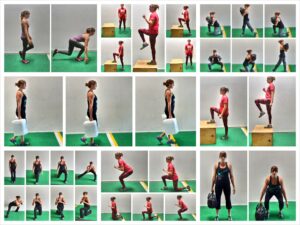
Create a Balanced Routine
Strength training, aerobic exercise, and flexibility exercises should all be incorporated into the daily regime. A functional fitness program can be structured as follows:
Warm-up: 5-10 mins of warm-up which could be dynamic stretches or a gentle warm up on the cross country ski machine.
Strength Training: Intensity should be achieved through explosive exercises that involve more than one muscle group.
Cardio: Ubmit HIIT or moderate aerobic exercise to enhance cardiorespiratory endurance and exercise capacity.
Flexibility: End with static stretching which assist on flexibility and recovery from the exercise.
Frequency and Duration
Ideal training frequency ranges between three to five sessions in a week using 30-60 minute sessions for the best outcomes. In order, quality is always maintained, hence choose a pattern that suits you and establish some discipline and adhere to it.
Introducing Functional Fitness for Distinct Age Groups
For Young Adults
Functional fitness offers important advantages to young adults, uniquely creating a sturdy foundation for impending challenges. Improving sports performance and lowering the odds of injury are two outcomes of practicing sports-specific movements.
For Middle-Aged Adults
For those in middle age, it is important to concentrate on strength and mobility. When it runs at peak performance, functional fitness can oppose the repercussions of aging, increase balance, and foster general well-being.
For Seniors
Functional fitness is important for seniors looking to keep their independence. Performing balance, coordination, and strength workouts can greatly reduce the risk of falling and boost the quality of life generally.
The Debate of Functional Fitness versus Traditional Weight Training Similarities The objectives of the two include increasing strength and improving endurance.
Both fitness plans can include resistance training and bodyweight exercises.

Differences
Functional Fitness: Features practices that are pertinent to everyday life; places importance on balance, flexibility, and strengthening the core.
Traditional Weight Training: Chances are it will focus on particular muscle groups; lacks the stress of practical applications.
Read More Article Like This on SmartandFit.online
Choosing the Right Approach
The decision around functional fitness vs traditional weight training depends upon the results you are aiming for. When your principal objective is to optimize daily capabilities and lower potential injury risks, functional fitness could be chosen as the best option. Still, the incorporation of elements from both can produce a comprehensive fitness regimen.
Universal Mistakes Regarding Functional Fitness
1. It’s Only for Athletes Those participating in athletics can gain from functional fitness, yet it is created with all people, whatever their level of fitness or age, in mind. These exercises are designed to be adapted to meet personal requirements and strengths.
2. It Needs Pricey Equipment Activities that promote functional fitness can be done with either little or no equipment. Bodyweight activities are exceptionally powerful, and hardly available materials at home can serve as replacements for regular weights.
3. It’s Just a Fad Functional fitness has successfully demonstrated its effectiveness based on research and the experiences of a large number of people. The fact that it prioritizes the improvement of daily functionalities makes it a classic technique for fitness.

Instructions for Achieving Success in Functional Fitness
1. Stay Consistent Seeing results requires consistency. Come up with an exercise routine that matches your daily routine and keep to it.
2. Listen to Your Body During and following workouts, make sure to be attuned to how your body feels. Adjust exercises as necessary to stop injury and guarantee correct form.
3. Progress Gradually To improve your training outcomes, raise the intensity, duration, or complexity of your workouts bit by bit. Doing this will help you steer clear of burnout and lower the chance of injury.
4. Mix It Up Include a mix of exercises to remain enthusiastic and invigorated in your routine. This can as well help to forestall plateaus and support ongoing development.
5. Seek Professional Guidance If you are beginning your journey in functional fitness, you might want to think about hiring a certified trainer who can show you how to do things correctly and create a personalized training plan for you.
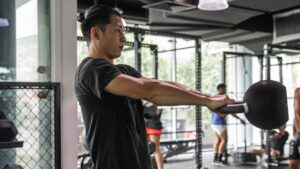
Conclusion
Functional fitness provides a usable training method that allows you to easily perform regular activities. You can improve your strength, balance, and flexibility, and lessen the chance of injury, by doing workouts that mimic movements in everyday life. Fitness that is functional appeals to people of all ages; whether you’re a young adult, a busy parent, or a senior who wants to maintain independence, it gives you the resources to do well in your daily routine. Fold in these ideas into your habit, and your physical fitness will be enhanced and you will have a superior life quality. Start your functional fitness adventure today and see how it benefits your normal life!
Read More Article Like This on SmartandFit.online

